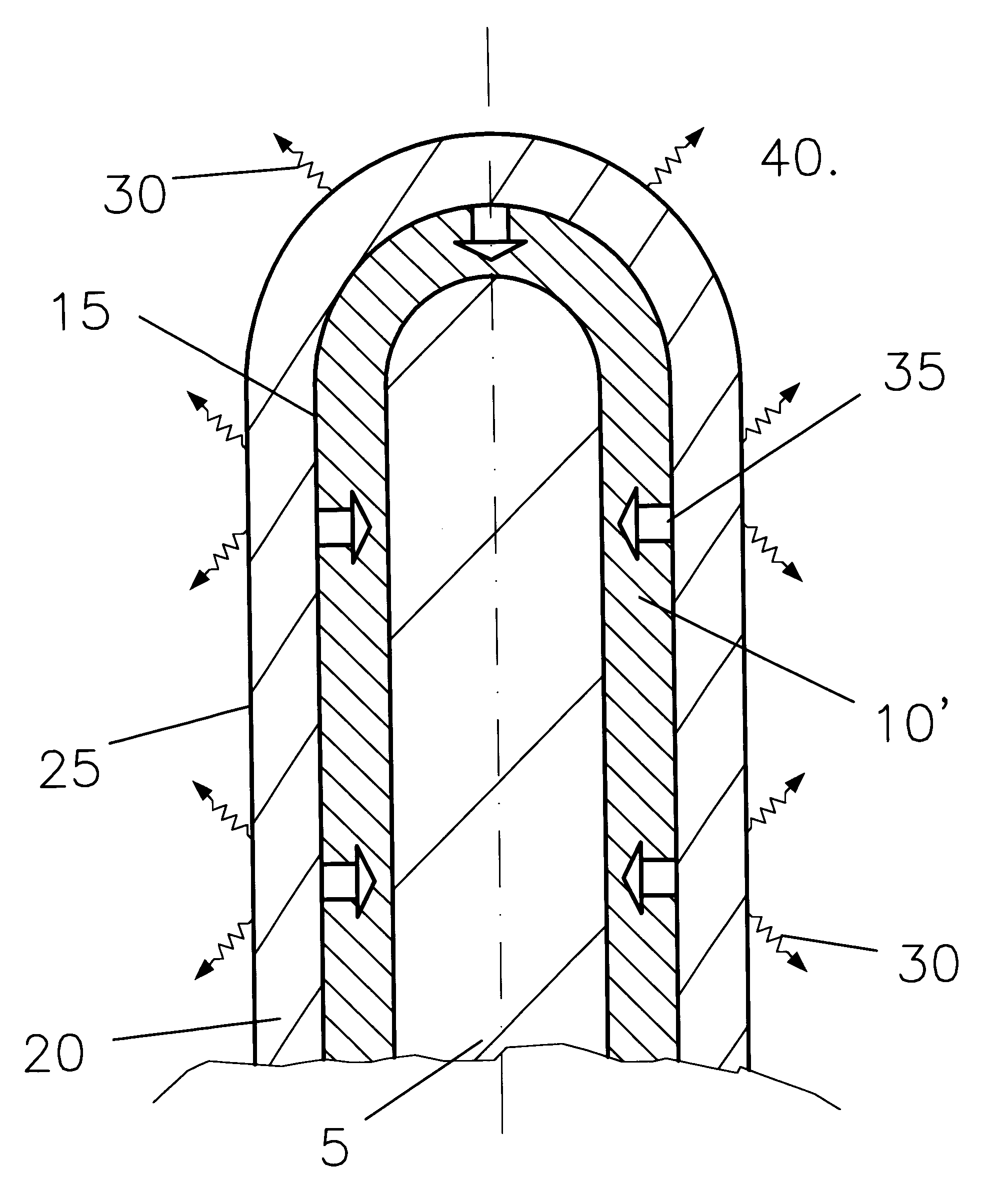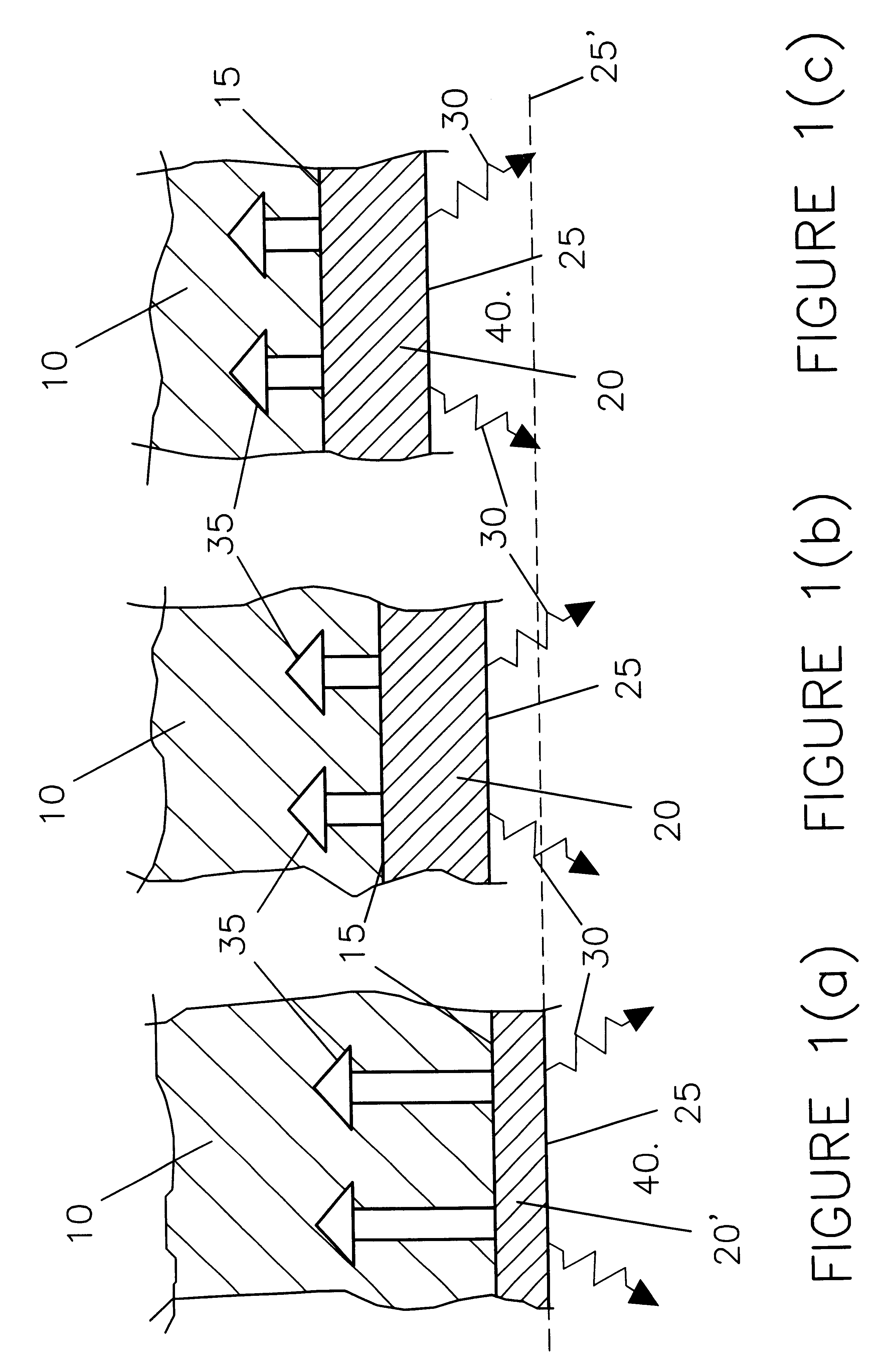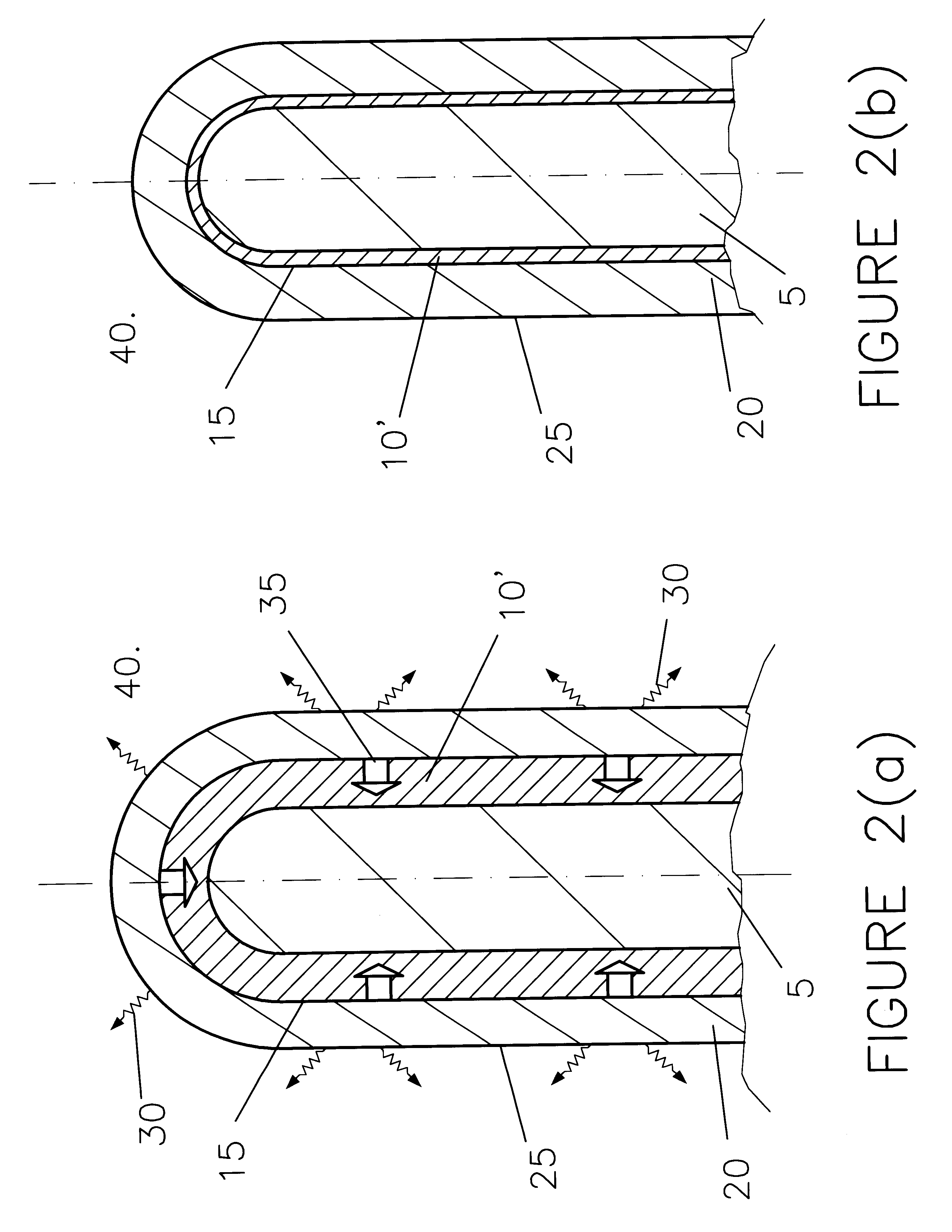Slow consumable non-carbon metal-based anodes for aluminium production cells
a production cell, non-carbon technology, applied in the direction of electrical-based machining electrodes, manufacturing tools, separation processes, etc., can solve the problems of inability to avoid or greatly improve, the frequency of anode replacement cannot be greatly improved, and the life of carbon anodes is very short, so as to reduce the frequency of anode replacement and eliminate carbon-generated pollution
- Summary
- Abstract
- Description
- Claims
- Application Information
AI Technical Summary
Benefits of technology
Problems solved by technology
Method used
Image
Examples
example 2
This Example illustrates the wear rate of the nickel-iron containing anode of Example 1 and is based upon observations made on dissolution of nickel-based samples in a fluoride-based electrolyte.
An estimation of the wear rate is made on the following parameters and assumptions:
With a current density of 0.7 A / cm.sup.2 and a current efficiency of 94% an aluminium electrowinning cell produces daily 53.7 kg aluminium per square meter of active cathode surface.
Assuming a contamination of the produced aluminium by 200 ppm of nickel, which corresponds to the experimentally measured quantities in typical tests, the wear rate of a nickel-iron sample corresponds to approximately 1.2 micron / day. Therefore, it will theoretically take about 80 to 85 days to wear 0.1 mm of the anode.
example 3
A multi-layer, non-carbon, metal-based anode was prepared comprising a self-formed electrochemically-active outer oxide-based surface layer according to the invention.
The anode was made by coating by electro-deposition a structure in the form of an rod having a diameter of 12 mm consisting of 74 weight % nickel, 17 weight % chromium and 9 weight % iron, such as Inconel.RTM., first with a nickel layer about 200 micron thick and then a copper layer about 100 micron thick by plasma spraying.
The coated structure was heat treated at 1000.degree. C. in argon for 5 hours. This heat treatment provides for the interdiffusion of nickel and copper to form an intermediate protective layer. The structure was then heat treated for 24 hours at 1000.degree. C. in air to form a chromium oxide (Cr.sub.2 O.sub.3) barrier layer on the structure and oxidising at least partly the interdiffused nickel-copper layer thereby forming the intermediate layer, thereby forming an inner core for an anode according...
PUM
| Property | Measurement | Unit |
|---|---|---|
| Angle | aaaaa | aaaaa |
| Percent by mass | aaaaa | aaaaa |
| Percent by mass | aaaaa | aaaaa |
Abstract
Description
Claims
Application Information
 Login to View More
Login to View More - R&D
- Intellectual Property
- Life Sciences
- Materials
- Tech Scout
- Unparalleled Data Quality
- Higher Quality Content
- 60% Fewer Hallucinations
Browse by: Latest US Patents, China's latest patents, Technical Efficacy Thesaurus, Application Domain, Technology Topic, Popular Technical Reports.
© 2025 PatSnap. All rights reserved.Legal|Privacy policy|Modern Slavery Act Transparency Statement|Sitemap|About US| Contact US: help@patsnap.com



